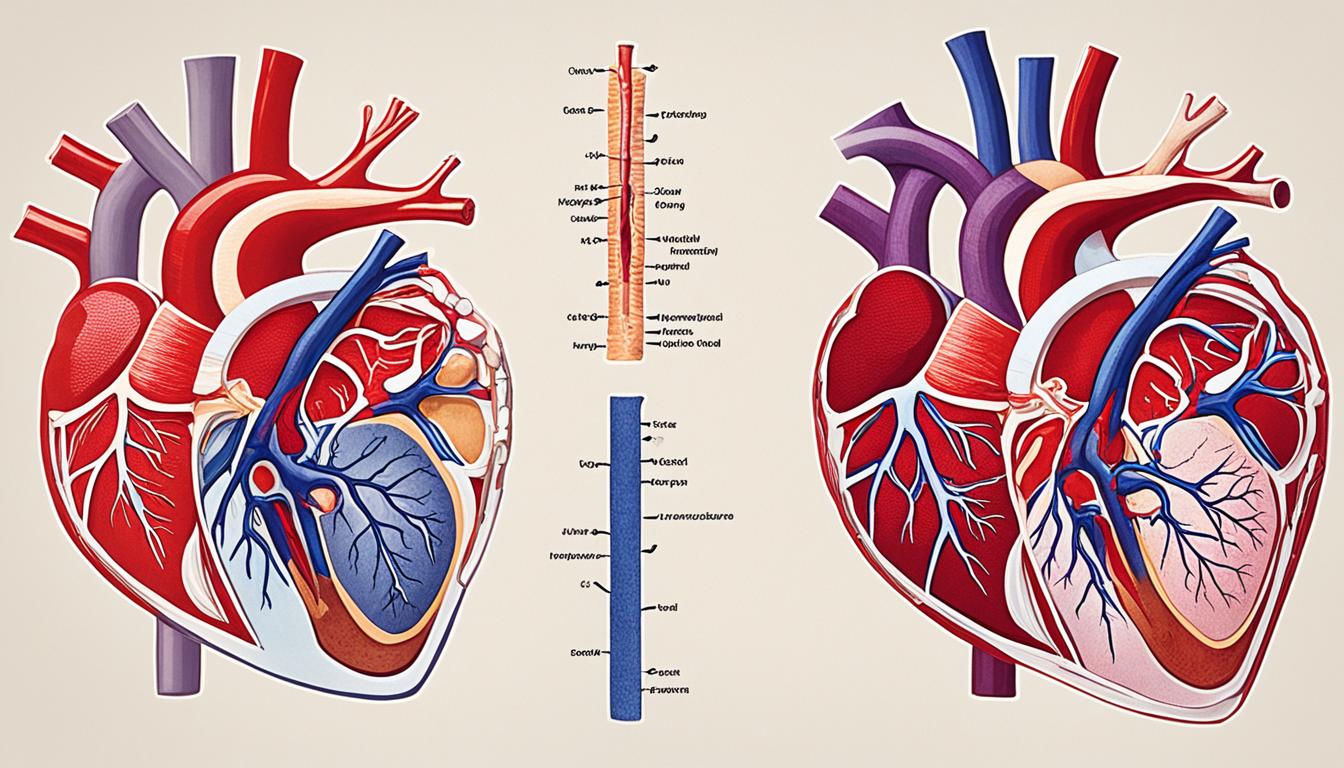Takotsubo cardiomyopathy is also known as broken heart syndrome or stress-induced cardiomyopathy. It affects the heart, causing a temporary malfunction of its chambers. This happens when someone experiences intense emotions or physical stress.
It was first noted in Japan in 1990 and has become recognized around the world since. This condition is often seen in older women who are past menopause. But, it can happen to anyone, no matter their age or gender. People with this condition may feel chest pain, have trouble breathing, feel dizzy, or even faint. Doctors diagnose it by looking at symptoms, electrocardiogram results, enzyme levels, and heart imaging tests. While there’s no direct cure, the focus of treatment is on easing symptoms and dealing with the root cause. Lately, using stem cells to treat Takotsubo cardiomyopathy has shown some positive results.
Key Takeaways:
- Takotsubo cardiomyopathy is a heart condition triggered by emotional or physical stress.
- Symptoms include chest pain, shortness of breath, dizziness, and syncope.
- Diagnosis is based on clinical findings, electrocardiographic changes, elevated cardiac enzymes, and echocardiography.
- Treatment focuses on managing symptoms and addressing underlying triggers.
- Stem cell therapy shows promise as a potential treatment for Takotsubo cardiomyopathy.
Clinical Features and Diagnosis of Takotsubo Cardiomyopathy
Takotsubo cardiomyopathy, also known as broken heart syndrome, is caused by stress. This stress can be emotional or physical. Either type can start the health condition.
If someone is very sad, scared, or even too happy, their heart can be affected. This can lead to Takotsubo cardiomyopathy.
Doing a lot of hard exercise or having a severe asthma attack can hurt the heart. These actions can also cause Takotsubo cardiomyopathy.
Sometimes, it’s hard to say what started this heart issue. This makes finding out why a person has it tough.
The most common sign is strong chest pain. It feels like a heavy pressure. Other signs are shortness of breath, feeling dizzy, or fainting.
Doctors look at heart tests to check for it. These tests often show specific changes in the heart’s rhythm and enzymes. This helps find possible cases of the syndrome.
Echocardiography is important for diagnosis. It shows specific heart chamber problems, which are common with this syndrome. It’s a key step to confirm the disease.
Takotsubo cardiomyopathy can start because of big emotions or heavy activities. It causes chest pain and trouble breathing. Heart tests like electrocardiography and echocardiography are crucial for doctors to diagnose and confirm it.
Pathophysiology of Takotsubo Cardiomyopathy
The cause of Takotsubo cardiomyopathy is not fully known, but there are some ideas. One idea is that low estrogen levels after menopause might help cause it. Estrogen is important for the heart’s health. It keeps blood vessels working well and helps the heart muscle. So, low estrogen could harm the heart’s blood vessels and muscle.
Excessive release of stress hormones like adrenaline could also be a cause. In people with Takotsubo, too much of these hormones can be released when someone is stressed or scared. This sudden rise can hurt the heart muscle temporarily. Doctors think this happens because the hormones make the heart muscle’s cells get too much calcium.
Conclusion
Takotsubo cardiomyopathy, or broken heart syndrome, is a rare heart condition. It can happen due to strong emotional or physical stress. This condition mostly affects older women after menopause. It causes a part of the heart to not work properly for a while.
Doctors diagnose this unusual heart problem with various tests. They look at symptoms, heart tests, and certain chemical levels in the blood. Then, they can see what treatment might help. Managing stress is crucial for healing.
Recent research has shown that stem cell therapy might be a good way to treat this issue. But, more studies and tests are needed to be sure how it works and the best way to use it. This shows a glimpse of hope for people with this condition.

